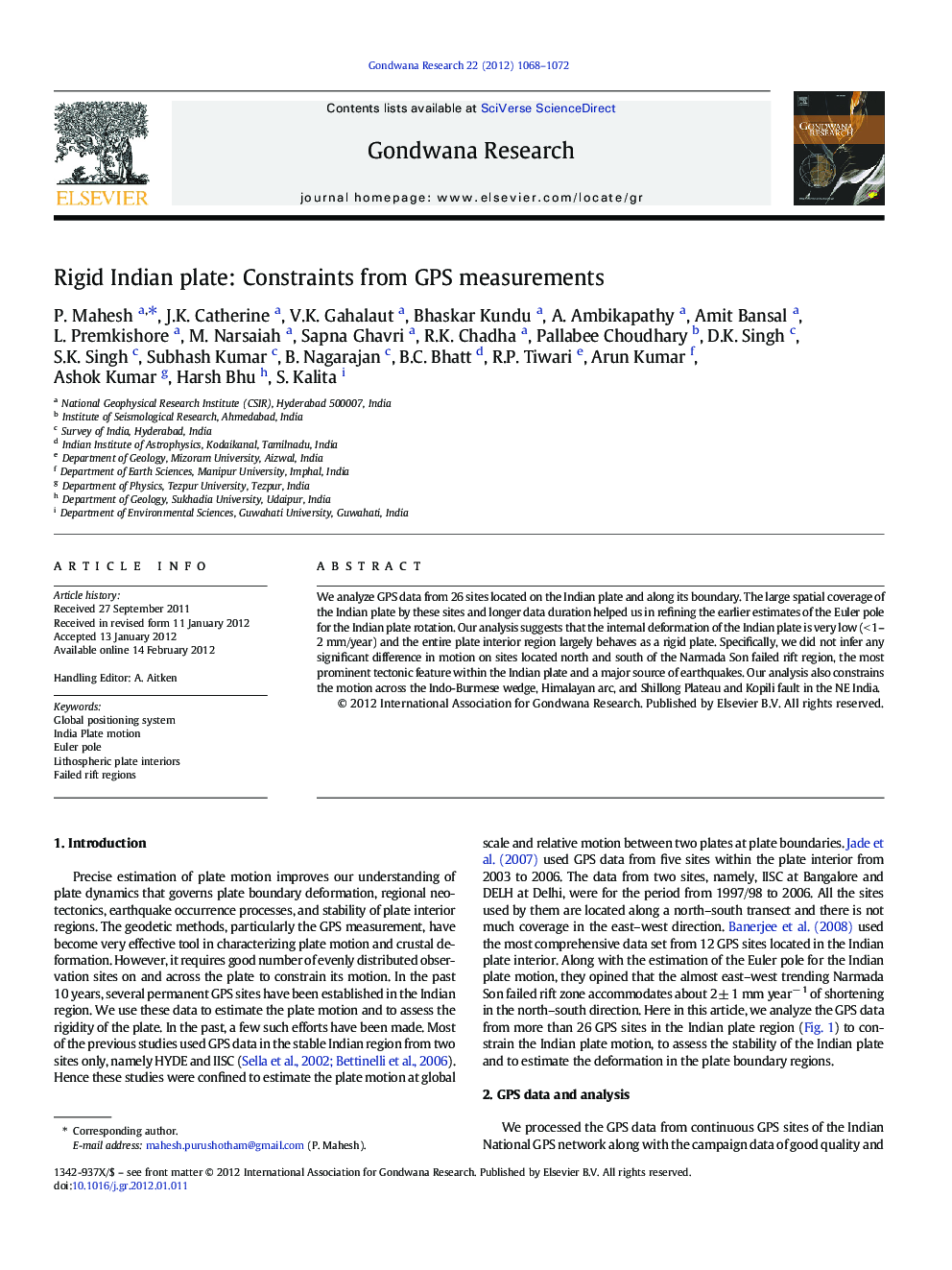| Article ID | Journal | Published Year | Pages | File Type |
|---|---|---|---|---|
| 4727014 | Gondwana Research | 2012 | 5 Pages |
We analyze GPS data from 26 sites located on the Indian plate and along its boundary. The large spatial coverage of the Indian plate by these sites and longer data duration helped us in refining the earlier estimates of the Euler pole for the Indian plate rotation. Our analysis suggests that the internal deformation of the Indian plate is very low (< 1–2 mm/year) and the entire plate interior region largely behaves as a rigid plate. Specifically, we did not infer any significant difference in motion on sites located north and south of the Narmada Son failed rift region, the most prominent tectonic feature within the Indian plate and a major source of earthquakes. Our analysis also constrains the motion across the Indo-Burmese wedge, Himalayan arc, and Shillong Plateau and Kopili fault in the NE India.
Graphical abstractFigure optionsDownload full-size imageDownload as PowerPoint slideHighlights► Indian plate motion is constrained from GPS data from 26 sites on Indian plate. ► Euler pole of rotation for Indian plate is at 51.4°N, 8.9°E with ω as 0.539°/Myr. ► The Indian plate is rigid as the internal deformation is very small.
